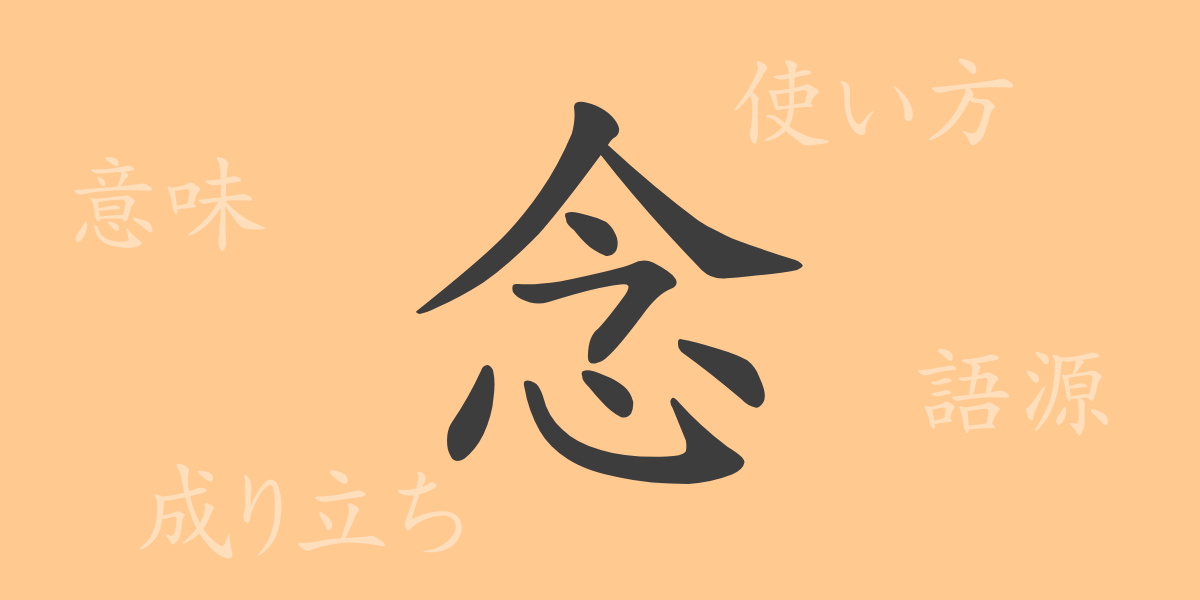Deeply rooted in Japanese culture and essential for expressing emotions, the character ‘念 (ネン)’ encapsulates our thoughts, wishes, and the act of putting our hearts into something. This article delves into the Kanji ‘念’, exploring its origins, meanings, usage, as well as phrases and proverbs, uncovering the profound world within a single character. By understanding the significance behind each Kanji, we rediscover the beauty and expressive richness of the Japanese language.
Origins of ‘念 (ネン)’
The Kanji ‘念’ traces back to ancient China, originally depicting the concept of ‘what is currently in the mind’—thus meaning ‘thought’ or ‘wish’. Composed of ‘今 (now)’ and ‘心 (heart)’, it evolved to signify the act of contemplation or wishing. Over time, this character made its way to Japan, where it gained further depth and became integral to various cultural and linguistic expressions.
Meaning and Usage of ‘念 (ネン)’
‘念’ encompasses meanings such as ‘to contemplate’, ‘wish’, and ‘memory’. It also conveys the act of keeping something in mind or focusing, as seen in phrases like ‘念を押す (pressing for confirmation)’ and ‘念には念を入れる (to be extremely cautious)’. In Japanese, ‘念’ not only stands alone but also shines within various phrases and expressions, amplifying its significance across different contexts.
Readings, Stroke Count, and Radical of ‘念 (ネン)’
‘念’ is widely recognized as a common Kanji in Japanese.
- Readings: On’yomi ‘ネン’, no specific Kun’yomi
- Stroke Count: Total of 14 strokes
- Radical: Heart (or ‘りっしんべん’)
Phrases, Idioms, and Proverbs Using ‘念 (ネン)’
The character ‘念’ plays a crucial role in numerous Japanese idioms and proverbs. For instance, ‘念願 (ねんがん)’ refers to a long-cherished wish, ‘一念発起 (いちねんほっき)’ signifies making a fresh resolution, and ‘念入り (ねんいり)’ means doing something with great care. These expressions are pivotal in everyday and business communications, vital for conveying emotions and intentions.
Conclusion on ‘念 (ネン)’
The Kanji ‘念’ maintains a close relationship with human emotions throughout its history and into modern usage, illustrating the depth of Japanese language. Understanding the meanings behind each Kanji is key to mastering more nuanced communication. By utilizing phrases and expressions containing ‘念’, one can aim for more heartfelt and meaningful interactions.

























